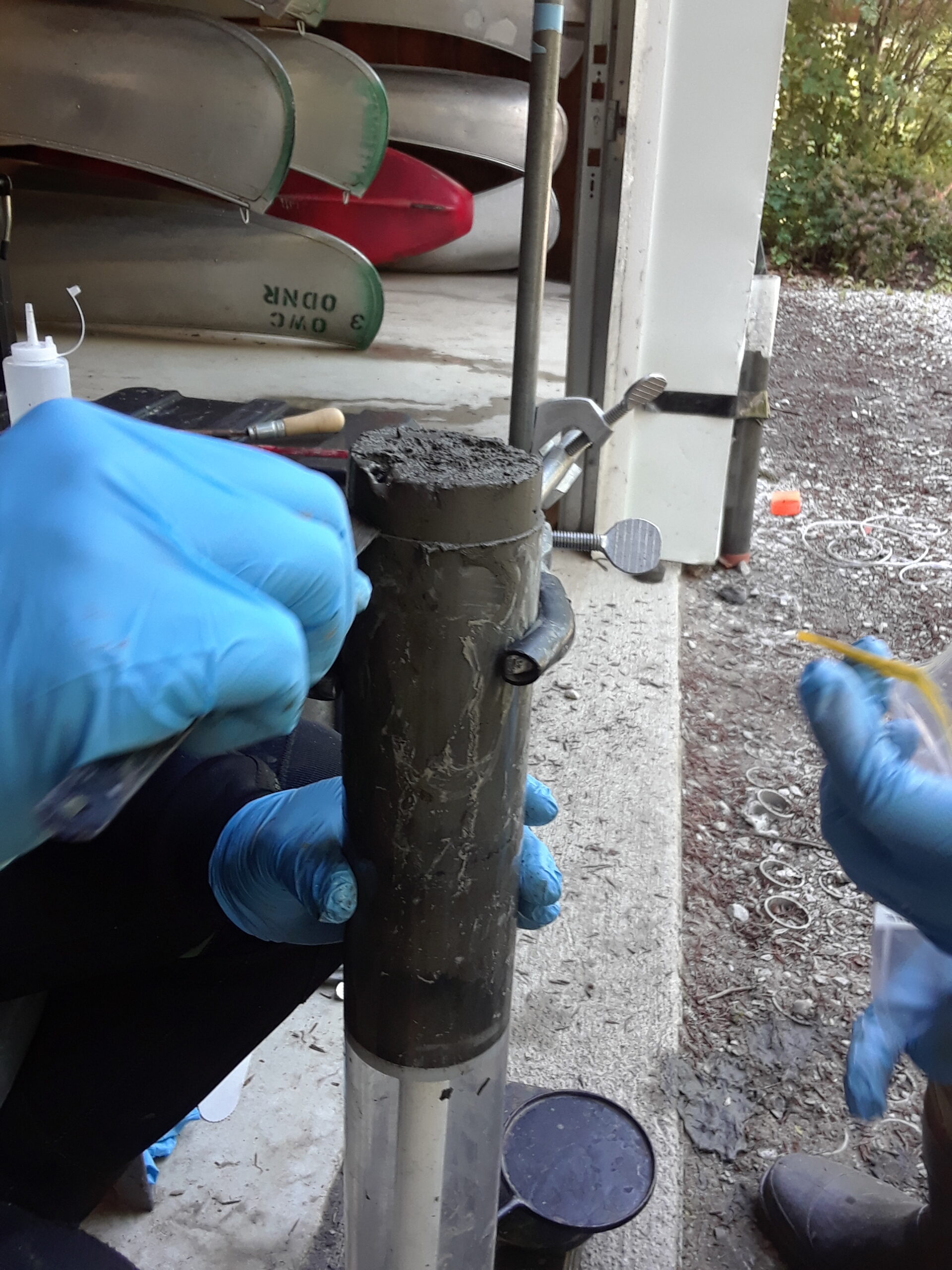January 24, 2023
Nutrient Accumulation in Freshwater Wetlands
Carbon, nitrogen, and phosphorus accumulation are connected to nutrient loads.

Segmenting soil cores after collection in 1 and 2-cm deep increments.
[Courtesy University of Louisiana–Lafayette.]
The Science
Wetlands help remove pollution from fertilizers in waterways while accumulating sediments and organic matter. In this study, researchers investigated how fertilizer load is linked with accumulation of key elements (carbon, nitrogen, and phosphorus) and the variability of accumulation across locations within the same wetland and at water depths. Results showed that carbon and nitrogen build up faster at deep spots and shallow areas, while phosphorus is faster only at deep sites. This study further established that when nutrients from fertilizers increase, the potential to accumulate carbon, nitrogen, and phosphorus in wetlands decreases.
The Impact
These findings have direct use in informing wetland management decisions. For example, increasing the presence of deep spots in wetland creation and restoration projects will enhance phosphorus accumulation. This means that phosphorus, an element responsible for algal blooms in Lake Erie, could be captured more efficiently in new or restored wetlands. This study can also inform management decisions at the watershed level and have far-reaching implications. Decreasing the load of fertilizers that reach the main waterway will lead to faster carbon, nitrogen, and phosphorus accumulation. In turn, faster build-up could reduce wetlands’ carbon footprint, easing climate change.
Summary
The comprehensive soil dataset created in this study examined the link between nutrient accumulation in wetlands and nutrient loads from watersheds. 36 soil cores were collected from three locations at the Old Woman Creek freshwater estuary in Lake Erie’s western basin. At each location, cores were extracted from three different water depths: shallow (<70 cm), intermediate (70–80 cm), and deep (>80 cm). Cores were segmented in 1 and 2-cm deep increments. Samples of each core increment were dated with lead-210 and analyzed for carbon, nitrogen, and phosphorus content. Nutrient loads were calculated from available datasets of flow and nutrient concentrations.
Principal Investigator
Gil Bohrer
Ohio State University
bohrer.17@osu.edu
Program Manager
Daniel Stover
U.S. Department of Energy, Biological and Environmental Research (SC-33)
Environmental System Science
daniel.stover@science.doe.gov
Funding
This study was funded in part by the U.S. Department of Energy’s Office of Science under Award Nos. DE-SC0021067, DE-SC0022191 and DE-SC0023084. Funding was also provided by the U.S. Geological Survey through the Ohio Water Research Center (G16AP00076), the Ohio Water Development Authority (7880), and National Oceanic and Atmospheric Administration Davidson Fellowship through the Old Woman Creek National Estuarine Research Reserve and the Ohio Department of Natural Resources (sub-award N18B 315-11).
References
Villa, J. A., et al. "Carbon Sequestration and Nitrogen and Phosphorus Accumulation in a Freshwater, Estuarine Marsh: Effects of Microtopography and Nutrient Loads." Geoderma 430 116349 (2023). https://doi.org/10.1016/j.geoderma.2023.116349.

